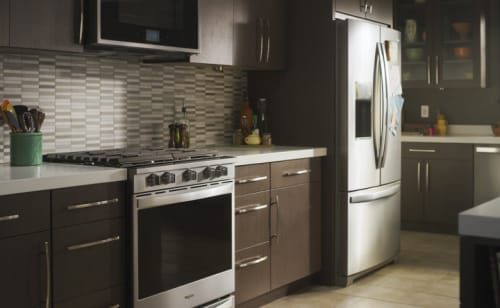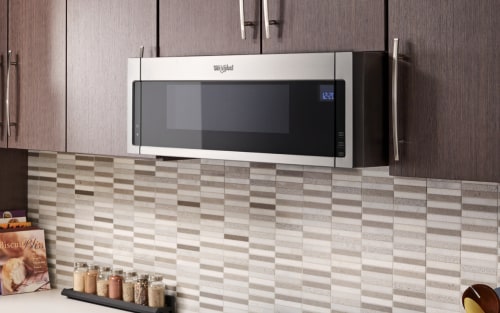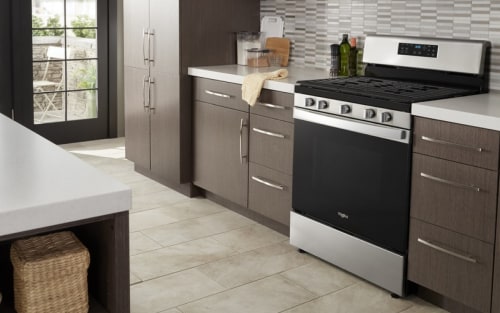
How to clean scorched pans
Finding out that you singed your dinner can be really upsetting, but discovering that you scorched your pan in the process can ruin your night. Exploring effective methods of cleaning your burnt pans can help keep your cookware in peak condition for years to come.
Keep reading to discover different methods for how to clean scorched pans.


Why does burnt food stick to the pan?
Food often sticks to your pan when your cookware isn’t hot enough or hasn’t been properly oiled, depending what it’s made of. To help prevent food sticking to your pan and burning, you need three main elements: heat, time and fat.
Give your pan enough time to preheat before cooking. Using oil or butter to lubricate your pan before cooking can help prevent food from sticking and burning. Always read the use and care guide for your pan if available since cooking methods, and how to prevent scorching can vary by material.
What products can be used to clean scorched pans?
You can use a number of household items to clean a scorched pan, such as baking soda, vinegar, lemons, dish soap and salt. You can use these ingredients as described below, or try a combination of methods to restore your pan to like-new condition. First and foremost, always follow the use and care guide for your pans.
Ways to clean burnt pans
There are multiple ways you can effectively clean your pans and pots. Using baking soda, acidic liquids such as vinegar or lemon juice, and scrubbing with dish soap are a few ways you can help restore your burnt cookware.
Before you clean your burnt pot or pan, take note if it is stainless steel, nonstick or cast iron. If you have pots and pans made of the same material, you can care for them similarly. Understanding how to clean your cookware based on the material it's made of will help it perform well during mealtime.
Supplies
Baking soda
Vinegar
Lemons
Aluminum foil
Dish soap
Salt
Water
Tools
Gloves
Sponge
Wooden spoon
Non-abrasive scrubbing pad

Method 1: Baking soda and vinegar
A baking soda and vinegar combo works well to clean copper and aluminum pans, but it’s too acidic for stainless steel or cast iron cookware. To use this method on compatible pots or pans, remove any loose food or debris from the pan before coating the bottom with a thin layer of baking soda and vinegar. Let the mixture sit overnight, then use a sponge or non-abrasive scrubbing pad to help remove the remaining burnt pieces.

Method 2: Lemons
Best for aluminum cookware—but not recommended for cast iron or stainless steel—cleaning with lemons is a fragrant way to tackle burnt-on messes. Start by cutting two or three lemons into quarters, then place them in the pot. Fill your pan with water so it covers the lemons and bring the water to a boil for 5–10 minutes. Discard the remaining water and lemon wedges and allow the pot to cool enough for contact, then scrub burnt-on food with a scouring pad.

Method 3: Cream of tartar
This gentle baking soda alternative is best for cleaning aluminum and stainless steel cookware. Simply combine one tablespoon of cream of tartar with one cup of water inside the pot or pan, then bring the mixture to a boil and allow it to cool. Use a sponge or nylon brush to scrub the affected areas before discarding the mixture into the sink.

Method 4: Salt
Using salt to clean your pan can help alleviate visible scorch marks and grease stains on cast iron pots and pans. Once you’ve removed loose food, sprinkle a layer of kosher salt on the burned area of your pan. Use a sponge or bristle brush to help scrub away stuck-on grime.
Can you clean a scorched pan with baking soda and vinegar?
Baking soda and vinegar can help you clean many parts of your home, including burnt pans. Baking soda is a mildly abrasive cleaner and vinegar has acidic properties that can help clean greasy surfaces. When combined, they create a fizzy foam that can break away layers of burnt food and oil left over on your pan, but these cleaning agents aren’t compatible with all types of cookware. Stick to using baking soda and vinegar on pans made of copper or aluminum, which can handle their acidity.
Baking soda and vinegar can also deodorize, helping you get rid of the burnt smell while also cleaning your pans.
Can you clean a scorched pan with toothpaste?
It’s not recommended that you use toothpaste to clean a scorched pan. You may risk damaging your burnt pan by using household items, such as toothpaste, in ways they aren’t intended. Instead, opt for items that are safe for your specific pans.
Can you use lemons to clean a scorched pan?
Lemon has become a popular natural alternative when it comes to cleaning. Although lemons aren’t suitable for all surfaces (including cast iron or stainless steel pots and pans), their acidity can help clean burnt pans by cutting through grease, oil and other grime.
Is it safe to use hydrogen peroxide to clean scorched pans?
Hydrogen peroxide is a common household item that could help you clean your burnt pan. Combine a small amount of hydrogen peroxide and a few drops of dish soap and put the mixture in your pan. Heat your pan on your stove and bring to a boil.
Next, let the mixture sit in your pan for at least 10 minutes so it can break up any burnt bits. To create a more powerful mixture, add baking soda and gently scrub your pan.


How do you clean and season a cast iron pan?
Cast iron pans are a timeless kitchen essential that require a bit of extra care compared to other types of cookware. Although using soap won’t ruin your cast iron, it also won’t help you preserve its seasoning. Refrain from using even gentle dish soap on your cast iron, instead use hot water and a stiff nylon brush to clean it.
To season your cast iron pan, coat the entire surface with oil before baking it in the oven on high heat (450-500°F) for an hour. The layer of oil will help your cast iron pan develop nonstick properties.
How to know when a pan needs to be replaced
Common signs that your pans need to be replaced include scratches on the surface, warping, chipping, broken handles and inadequate performance while cooking. If your pan is no longer in a usable condition, check with your waste service provider to see if it can be recycled.
Explore Whirlpool® Dishwashers
Whirlpool® Dishwashers have features that help you put more care in your kitchen cleaning routines. The Boost Cycle helps optimize your cleaning routine, giving you the ideal amount of water, time and heat to make your dishwasher safe pans and dishes sparkle.
Learn how to clean appliances with Whirlpool®
-
 How to Clean & Polish Stainless Steel Appliances Learn the best way to clean and polish stainless steel to make it shine. Plus, get tips for removing stains and rust from stainless steel appliances.
How to Clean & Polish Stainless Steel Appliances Learn the best way to clean and polish stainless steel to make it shine. Plus, get tips for removing stains and rust from stainless steel appliances. -
 How to Clean a Microwave Heat 1 cup of water in a microwave-safe container for 3-4 minutes to loosen grime. Wipe the interior with a soft cloth dipped in water and a little dish soap.
How to Clean a Microwave Heat 1 cup of water in a microwave-safe container for 3-4 minutes to loosen grime. Wipe the interior with a soft cloth dipped in water and a little dish soap. -
 How to Clean an Oven Learn how to clean your oven so it looks and smells great. Our guide will teach you how to clean your oven, racks and glass door so the job is complete.
How to Clean an Oven Learn how to clean your oven so it looks and smells great. Our guide will teach you how to clean your oven, racks and glass door so the job is complete.


home heartbeat
Ready for more tips, home hacks and appliance guides?






